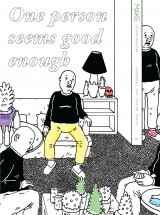
by Mark Molloy

In all probability the situation is this: before we transcend ourselves in love and enter into the life and often alien rhythm of another human being, we experiment early on with basic rhythms that proclaim themselves in their simplest forms in these sorts of games with inanimate objects. Or rather, these are the rhythms in which we first gain possession of ourselves. ~Walter Benjamin. “Toys and Play,” 1928.
For a developing strip on a four-lane street in Wichita, Kansas, NuPenny’s arrival was abrupt. One day the tall glass storefront opened into an empty white room. The next day, it had become a window into a past that never existed, a display of toys fabricated after 50s-era muscle cars, robots, and sleek spaceships, an entire room painted in gray scale. Without an opening or artist’s statement placard, NuPenny still garners both curious looks and distrust. Passersby press their hands to the glass for a better look. Bikers slow and take on quizzical smiles. At dusk, as I stand in front of the 1920s brick building, cars rush along the overpass nearby, and inside NuPenny’s lights kick on, amplifying the surreal nature of this toy store that never opens.
Resting between a locksmith with an impressive range of old keys hung above a sparsely attended register and a donut shop with leopard print carpet and a chiming analog pinball machine, NuPenny’s weathered sign suits the strip. In fact, if you weren’t from the neighborhood, you could imagine that the store owner, a long time ago, had simply twisted the lock shut and walked away. However, it was only months ago that NuPenny appeared, and it’s not the first time this has occurred. NuPenny debuted in Maine before coming to Kansas in the summer of 2011, and soon the shop will again vanish.
I loop around to the back of the building and knock on the metal garage door, which serves as a living room wall. Inside, a large dog barks in circles. Randy Regier, the forty-something artist responsible for NuPenny, lets me in through another door that takes us through his bedroom and down a set of concrete steps into a high-ceilinged warehouse space.
Randy has a scruffy smile, jeans and t-shirt. He hands me a beer from a cooler atop a large island in his open kitchen and motions across to the living room, where far away his wife waves from under a reading lamp. For a space that must have been an old automobile shop, it’s cozy. Randy is still settling in, but the coffee table already holds books on sci-fi art and the walls support long shelves of Randy’s toys. One by one he plucks them off the walls and puts them in my hands. He moves down the line, pointing to his board games and watch displays. He takes me to another closet containing his other projects—converted model racecars from Spain and windup metal dancers. His passion for each toy is palpable, their back stories emerging in energetic anecdotes.
Randy tells me he grew up in Oregon, moving to Abilene, Kansas in 1997. For Randy, it wasn’t until his thirties that he realized he was a part of art. Creating worlds and illustrating is something everyone does, he says. A year after the move, Randy, for the first time in his life, started college. Toys were the first objects to come out of his work at Kansas State, an hour commute away. “It seemed sudden to people around me,” Randy says, “but to me it was something I’d been gearing up to do my whole life and just didn’t know I could.”
Before the move, Randy worked at a body shop for fifteen years as an automobile painter. The monotonous work ran him down. College wasn’t simply a place to practice art, but a legitimization of his pursuits. “For the first time in my adult life,” he says, “I had not only permission to make something that was creative, but it was an assignment, so I didn’t have to justify it.”
Randy leads me through double doors into the back room, the shop side of his home where enormous fans run on high. Randy rolls two mismatched vinyl office chairs into the middle of the room. It’s mid-summer and hot. The studio is littered with work in progress. Around us are metal workbenches with power tools, molds for pouring plastic figurines, cardboard boxes of toys in development, wooden shelves holding paint buckets, and, all the way in the back, the peeking corner of a vintage telephone booth among a trove of objects awaiting transformation.
Andrew Bales: Your toys have a 50s aesthetic. Is there a generational divide in the response to your work?
Randy Regier: I’ve had a fair share of people my age and older say, “It’s too bad the twenty-year-olds won’t get it.” Fortunately, that’s not the case. They really do connect with it, even though my aesthetic seems to be generated around the 50s to 70s. I’ve been amazed at how quickly and easily the toys read for people much younger than me. It’s nice when what the work is trying to do rises above the aesthetic.
AB: How do you respond when your toys evoke nostalgia?
RR: It’s hard to be nostalgic for my work in the true sense of nostalgia because they can’t specifically recall any of my pieces, and if they do they’re wrong. Every single toy I make did not exist in their childhood.
We’re all wrong about our memories to some degree. It’s very difficult to recall clearly childhood. There have been instances where people have said that I didn’t make up a couple of the toys, that they were old toys they used to have, which I think is fascinating, because its inconceivable. But I was also moved that the toys would be believable enough to be remembered like that. I’m honored by that.
AB: What personalities and motivations do you find when dealing with Toy Collectors?
RR: Toy collectors aren’t of a single mindset. For instance, in Wichita I’ve met with poet Albert Goldbarth. His method of collecting and his reason for collecting are on the really high end of the spectrum. It’s deeply personal. There’s an element of preservation and stewardship.
There are others, though. Speculators of toy futures. The wheeler-dealer, trying to get in early and score stuff cheap.
Then there are those trying to recover a past they never had or a past they did have and lost. Which is very nostalgic… the word nostalgic is problematic. The root of it is sickness. The word nostalgia was composed to categorize Swiss soldiers who were unable to fight outside of Switzerland. They were so sick for home that they were incapable of combat. There’s a whole category of collectors who are like that.
AB: Each generation has its own toys, its own aesthetic. How have toys changed since your childhood? What’s your take on today’s toys?
RR: Toys are much more pornographic now. I don’t mean that in a detrimental sense. It’s about bigger. If you look at what’s happened with toys, it’s the exaggeration of musculature and breasts, of the wheels and tires on cars. Toys tend to be much more prefabricated and provocative in the sense that they present a visual that’s not as likely to be seen on the street.
Legos, for example, has become this incredible product. When I had Legos it was red bricks and white bricks and one colonial house window. I remember trying to make an X-Wing Fighter in 1977 and it looked like a two pixel video game. It looked like ass. I hated it, but it was the best I could do. But now, Legos are incredibly elaborate and sophisticated toys. It would have been fascinating to watch Walter Benjamin go through a Toys R Us today.
AB: Walter Benjamin is a name that comes up a lot in relation to your work. How has his writing influenced the toys you make?
RR: He’s one of the very few people who’s written about toys in a sophisticated way, rather than a reductive way. Unfortunately, he didn’t live long enough to cast a long glance back on his own career. The reason I read Benjamin is because he wrote about toys in a time where very few people were writing about toys, and he wrote about toys in a way people still aren’t writing about toys, which is intellectually and honestly. About the triangulation of what a toy, as a product of an adult world, is to a child. Two points make a line, and three points make an area. What happens in this area?
AB: Why is NuPenny locked?
RR: The purpose behind the work—well, let me turn to something that happened to me in Kansas: I was a junior at Kansas State, living in Abilene and making the commute to Manhattan. My wife was working at an Alco warehouse, and I was selling plasma to get gas. On NPR was an interview with Coleman Barks, who is known for his interpretations of Rumi poetry. He was reading his translation of “Love Dogs,” and he got to the end of it and it hit me so hard, I was crying so hard, I had to pull off the side of the interstate and sit. In essence, the way I heard the poem, I still hear the poem, is Rumi says, “Listen to the moan of the dog for his master.” That call, that desire, is of itself. To desire something so strongly is the response, and if you have that thing you desire, you’ve lost the most amazing moment.
You can make an equivalent to, say, a Hotwheel in a blister pack (I got them in blister packs when I was a kid). Products are so much more desirable when they’re behind that clear plastic and you don’t quite have it, but you can. As soon as you rip that package open, you’ve just passed that best point of attainment. You just went right past the moment where it was absolutely the sweetest it’s ever going to be. And to roll the car back and forth on the table will never be as good, I don’t think, as when you just got it and it’s still in the plastic.
So, I could totally kick those doors open and people could come in and play with those toys and not hurt it. They’re built. They’re real toys. They could be bought and played with, absolutely. But that would be to miss the whole point of the desire.
I never built NuPenny to fuck with people, but I don’t know how it couldn’t. To put people in the position of desire and then refuse them a consummation of that, that would piss people off. There’s art that pisses me off, so fair enough.
NuPenny’s not like my other work. I’m not really clear why I feel the need to keep pointing this out. Testing it, pushing it, provoking it in people.
AB: Has Wichita’s response to your work been surprising?
RR: It’s interesting that there’s been so much angst. But I could see that more as me being an outsider that’s showing off. If I had the luxury of a one-on-one with some of these people we’d probably come to some sort of truce.
Ultimately, to do any sort of creative endeavor, particularly that’s this sudden, and expect people to like it is problematic. If people could get in, I don’t think they’d feel any differently. The reason they can’t get in is the reason for the work. It doesn’t have to be toys. It could be anything desirable, but toys have a certain way of capturing people.
AB: What do you see happening to your collection moving forward?
RR: I’m tempted to leave it in Wichita as long as we live here, let it gather dust, let the light bulbs burn out over time. If it sat a long time, and it became more owned by the community, I think it would shift. For those who might have reservations, it would be less he’s screwing with us and more it’s ours, this is us.
I don’t have answers to any of that. Just like most artists and people, we’ll always need money. There’s absolutely no profit in NuPenny. It might be a situation that’s not my call, but someone with means that says, “I want it.” If someone else owns it, anything could happen. I think it would be fascinating to sink it in the Arkansas River right downtown and then every year when the water’s low have it emerge. That’s what I’d do with it if I could: sink it and have it emerge every so often.
It’s like La Cabina, the psychological horror film done under Franco. There’s this telephone booth that gets delivered to the city before anyone’s up and bolted down into this park. At the end of the day it gets picked up with a person trapped inside, like a fly trap.
I think NuPenny would be more viable if I were to, with patron’s help, get a big metal and glass structure, like a prefab guard shack, it’s all grade metal with glass panels. They just truck it in and bolt it down. I’ve got enough room in here to have one. It could be loaded on a trailer, build NuPenny all into it, and then have it be a thing from Wichita that goes anywhere in the United States. It could go in the middle of a wheat field, into the Utah desert, or a parking lot in Cleveland. And overnight, this toy store appears. All the lights come on, it has solar panels, completely self-contained. It’s there for a week and then poof, gone.
Randy Regier
–>
Andrew Bales lives in Wichita, Kansas, where he is the Barr Fellow in Wichita State University’s MFA program. His stories have won second-place in Glimmer Train’s 2011 Short Story Award for New Writers and have appeared or are forthcoming in New Delta Review, Bateau, Midwestern Gothic, NANO Fiction, Johnny America, and other journals. Find him online at AndrewBales.com.















click to see who
MAKE Magazine Publisher MAKE Literary Productions Managing Editor Chamandeep Bains Assistant Managing Editor and Web Editor Kenneth Guay Fiction Editor Kamilah Foreman Nonfiction Editor Jessica Anne Poetry Editor Joel Craig Intercambio Poetry Editor Daniel Borzutzky Intercambio Prose Editor Brenda Lozano Latin American Art Portfolio Editor Alejandro Almanza Pereda Reviews Editor Mark Molloy Portfolio Art Editor Sarah Kramer Creative Director Joshua Hauth, Hauthwares Webmaster Johnathan Crawford Proofreader/Copy Editor Sarah Kramer Associate Fiction Editors LC Fiore, Jim Kourlas, Kerstin Schaars Contributing Editors Kyle Beachy, Steffi Drewes, Katie Geha, Kathleen Rooney Social Media Coordinator Jennifer De Poorter
MAKE Literary Productions, NFP Co-directors, Sarah Dodson and Joel Craig